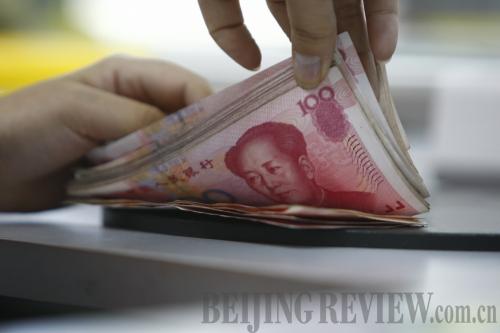|
RMB not the answer
 |
|
NOT THE CULPRIT: Many U.S. and Chinese economists agree that the yuan is not the root cause of the U.S. employment predicament—the problem lies in the U.S. economy itself (ZHONG MIN) | Trade in goods contributes less than a quarter to China-U.S. economic cooperation; the rest lies in the service trade. The United States exports as much as $20 billion in services—for instance, investment banks conducting initial public offering for Chinese companies—to China each year; about 50,000 U.S. banks, insurance companies, auditing firms and law firms have operations in China with annual sales revenue of $220 billion.
"Trade between China and developed countries are supplementary to each other. A substantial appreciation of the yuan will not help U.S. employment, but will force the United States to seek imports from other emerging economies," Wang said.
Differences in calculations between the two countries have also caused disputes in terms of trade value. The U.S. calculation overestimates its deficit with China in four ways. First, it applies different statistical standards to imports and exports. It tends to overestimate the value of imports and underestimate the value of exports. Second, the United States adds the "Made-in-China" products it imports from other regions or countries to imports from China, while excluding its exports to China via Hong Kong or other regions, which contributes to the trade imbalance. Third, when calculating its trade value with China, the United States only uses commodity trade data but excludes the value of services it exports to China. Fourth, a large number of Chinese products are exported to the Caribbean and Latin American regions via the United States; and these products, too, have been included into China's export figures to the United States.
Since China started the reform of the yuan exchange rate regime in July 2005, the yuan has risen 23.5 percent against the U.S. dollar. From January 1994 to July 2010, the Chinese currency rose 55.2 percent against the U.S. dollar. But the U.S. trade deficit continued to expand in the same period.
"Those who claim the yuan is undervalued deliberately disregard the fact that the yuan has appreciated substantially since the reform began. Their insistent allegations clearly have other intentions," said Wang.
Yao Jian, spokesman of the Ministry of Commerce, said on October 15 that China had no intention of pursuing a trade surplus in its international trade. During the financial crisis, China's imports from the United States, the EU, Japan, Australia and South Korea rose about 50 percent respectively. China's import growth rate, Yao said, was twice the speed of China's exports to those countries and regions.
Trade surplus
The United States, Yao said, had a trade surplus for 93 years before the 1980s—China has only had a trade surplus for a little more than 10 years. More importantly, China's surplus with the United States is mostly generated by foreign-funded or foreign-owned companies in China, which produce nearly 88 percent of Chinese exports to the United States. Those foreign investors have taken away the lion's share of profits.
"If China held a surplus of $10, $1 or $2 of it goes to China, but $7 or $8 goes to foreign-funded companies, mostly established by American, European and Japanese companies," said Yao. "It's utterly irrational [for the United States] to hold the yuan as the scapegoat for its own national problems," he stressed.
On the Chinese side, the yuan does not have a solid foundation for substantial appreciation.
"The center of the conflict is that the United States wanted to depreciate the dollar, but was met with resistance from other economies. How things develop in the coming months depends on whether the United States changes its mind," said Andy Xie Guozhong, an independent economist and a director at Rosetta Stone Advisors Ltd. "Although the value of the dollar is close to its lowest point in history, the U.S. Government is still pushing for further depreciation."
Right now, the belief among U.S. political leaders is that depreciating the dollar will help boost employment, Xie said. But this is just wishful thinking; the hovering unemployment rate is due to the fact that private companies are reluctant to hire new employees in these uncertain economic times.
"The only benefit of dollar depreciation is a slight increase in U.S. exports, but then inflation will come along. If other countries refuse dollar depreciation, and follow suit to print more money, worldwide inflation is inevitable," said Xie. "Right now, it all depends on the United States," he added.
Many U.S. politicians think that printing more greenbacks to depreciate its currency is totally reasonable and rational, but it is utterly unacceptable for other countries to do the same. Xie said the double standards were too obvious.
Ultimately, dollar depreciation cannot salvage the U.S. economy. The U.S. Federal Reserve has slashed its benchmark interest rate to nearly zero, and the government budget deficit has risen to 10 percent of the GDP. After a recovery for several quarters, the U.S. economy is declining again with the unemployment rate nearing 10 percent.
"If you're Paul Krugman, you'd probably say the current stimulus is not powerful enough. You might suggest raising the budget deficit to 20 percent of GDP, and another round of quantitative easing," Xie said.
"What it all comes down to," Xie said, "is that depreciating currencies for export growth is a zero-sum game."
| 